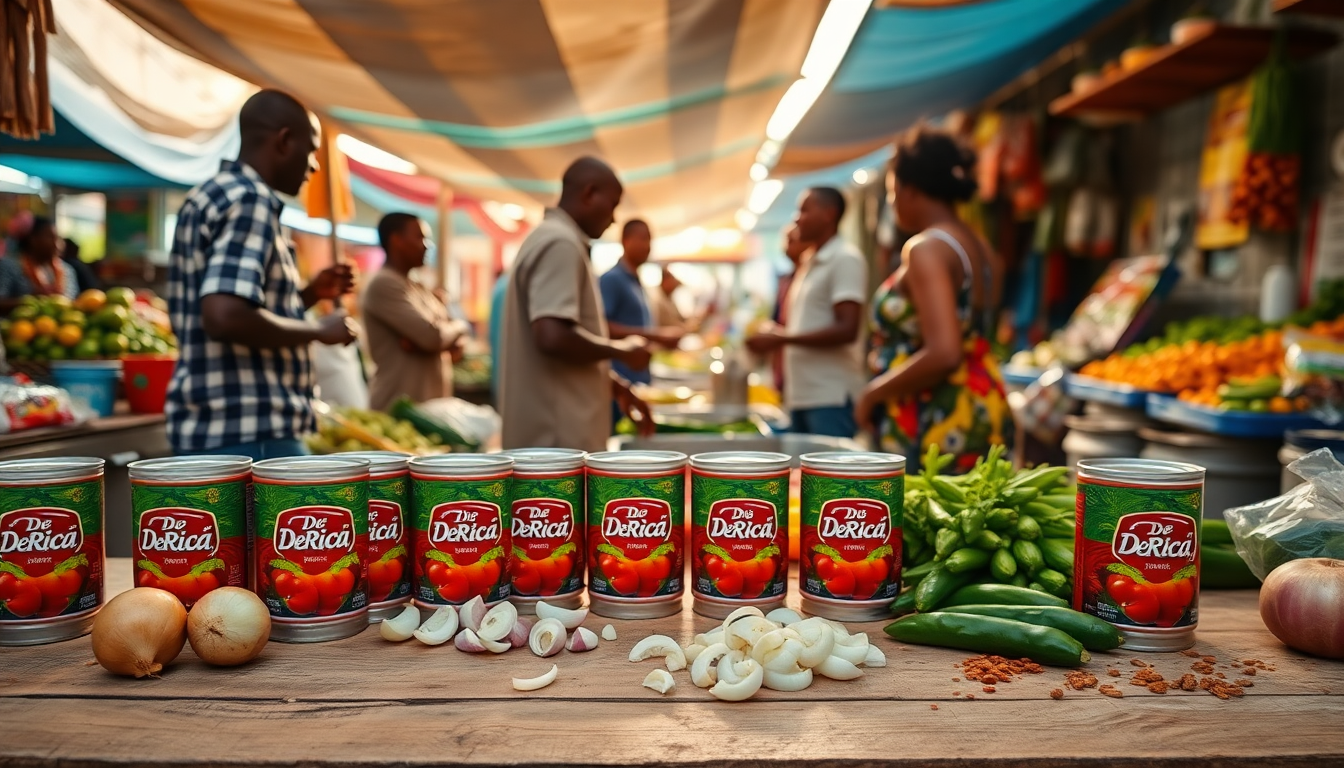Table of Contents
The De Rica tomato paste brand may not be as prominent as it once was, but it still holds a special spot in the heart of Nigerian culinary culture. Known for its distinct flavor and quality, De Rica has evolved beyond its original use, becoming a common unit of measurement in markets, especially in Lagos. So, what’s the story behind De Rica? Let’s explore its roots, its current status, and why it continues to be significant in everyday transactions.
The Historical Footprint of De Rica in Nigeria
De Rica’s journey began in a tomato processing factory in Italy’s Emilia-Romagna region. When it arrived in Nigeria during the mid-20th century, it quickly became the go-to brand for tomato paste. For many Nigerians, particularly those who grew up in the 1960s and 70s, De Rica was the essential ingredient for creating rich, flavorful sauces. Can you imagine a kitchen without it?
As the brand’s popularity soared, it became so well-known that people often referred to it simply as ‘tomato paste.’ This widespread recognition sparked a cultural phenomenon: the term ‘derica.’ Market vendors began using empty De Rica tins to measure out quantities of rice, beans, and other staples, effectively recycling the cans and embedding the brand even deeper into the local economy.
Market traders like 49-year-old Henry Njoku remember how the term ‘derica’ was already in use when he moved to Lagos in the 1980s, long before the brand’s decline. This enduring association illustrates the lasting impact De Rica has had on Nigerian culinary practices. Isn’t it fascinating how a brand can influence language and daily life?
The Transformation of Measurement in Nigerian Markets
The way ‘derica’ is used as a unit of measurement is a testament to the creativity of Nigerian market vendors. Food writer Yemisi Aribisala points out that the shift from brand-specific containers to a variety of other tins reflects changing consumer behavior and the economic challenges vendors face. With good scales often too expensive, it makes sense that they turn to readily available empty cans.
While De Rica may have disappeared from many market shelves, its legacy lives on through the term ‘derica.’ Today, various tins are used for measuring, yet the cultural reference remains firmly tied to De Rica. It’s interesting to see how a brand can morph into an everyday language staple, don’t you think?
Adding to the complexity, the Nigerian federal government’s ban on importing tomato products in 2017 significantly altered the landscape. Intended to boost local production, this move inadvertently contributed to the decline of iconic brands like De Rica, which has since shifted to plastic packaging, drifting further from its historical roots.
Current Relevance and Nostalgic Memories
Despite these hurdles, De Rica still has a cherished place in the hearts of many Nigerians. Chefs, like Victor Moses, working in upscale restaurants, actively seek out the brand for its unique flavor, believing it enhances traditional dishes. This loyalty speaks volumes about the brand’s cultural significance, as consumers continue to associate it with quality and authenticity.
In Nigerian communities abroad, especially among the diaspora, De Rica is experiencing a revival. Many expatriates hunt down the brand as a nostalgic reminder of home, showing that even in its diminished presence, De Rica symbolizes culinary heritage. Isn’t it amazing how food can connect us to our roots, no matter where we are in the world?
In conclusion, while De Rica tomato paste cans may not be a common sight in Nigerian markets today, their legacy endures through the term ‘derica.’ This transformation from product to unit of measurement beautifully illustrates the resilience of cultural practices amid changing economic landscapes. Reflecting on De Rica’s story reminds us of the intricate relationship between food, culture, and identity in our lives.


